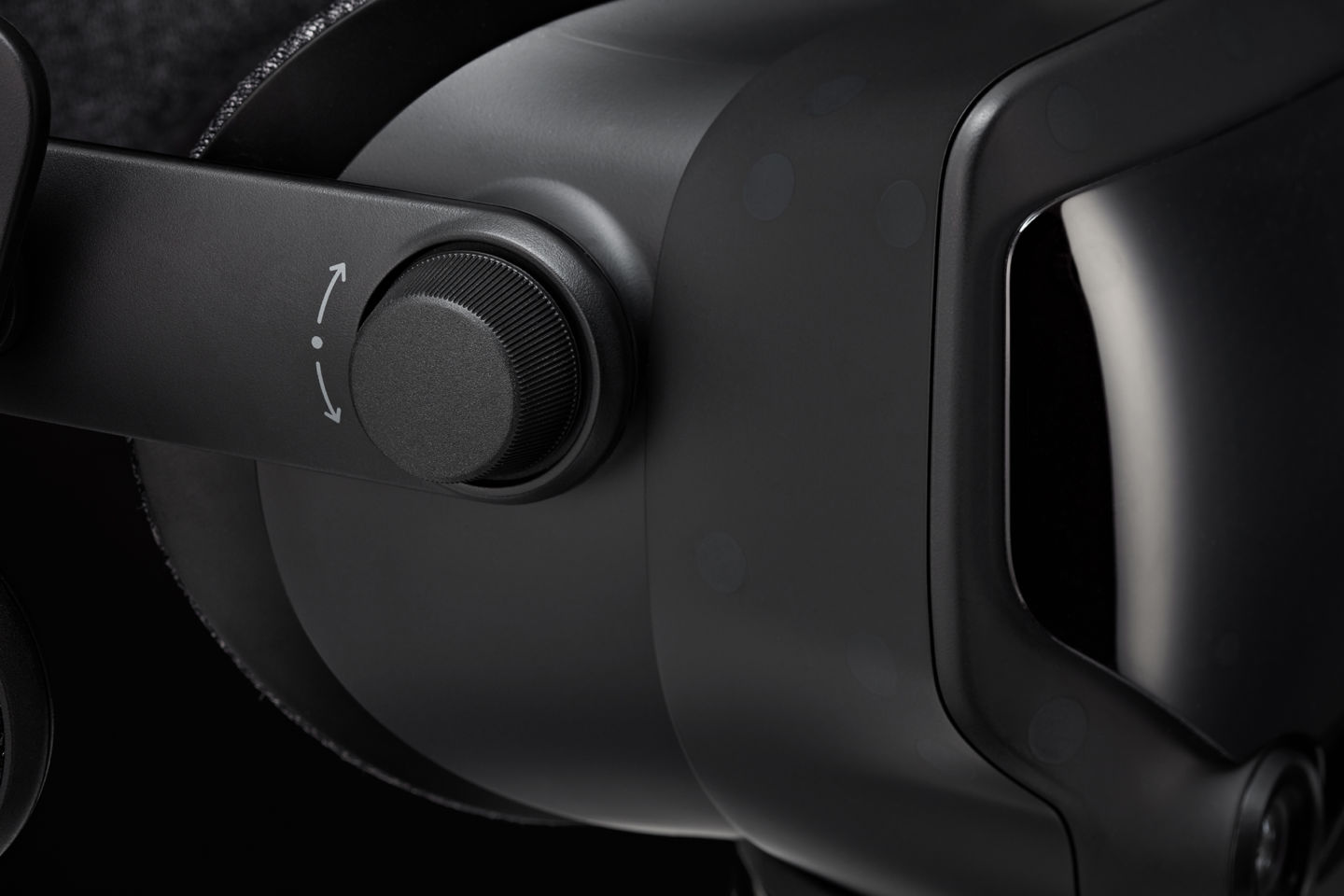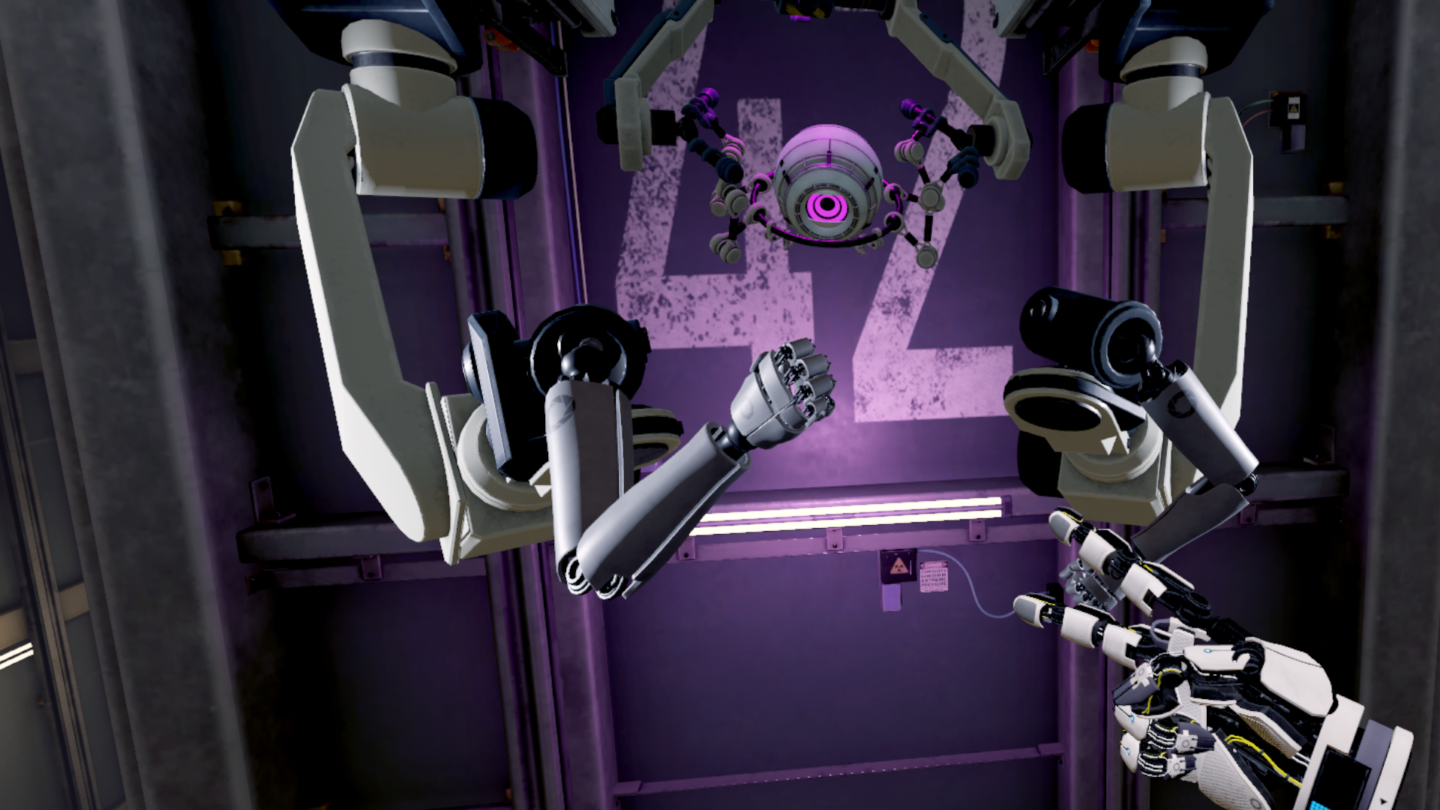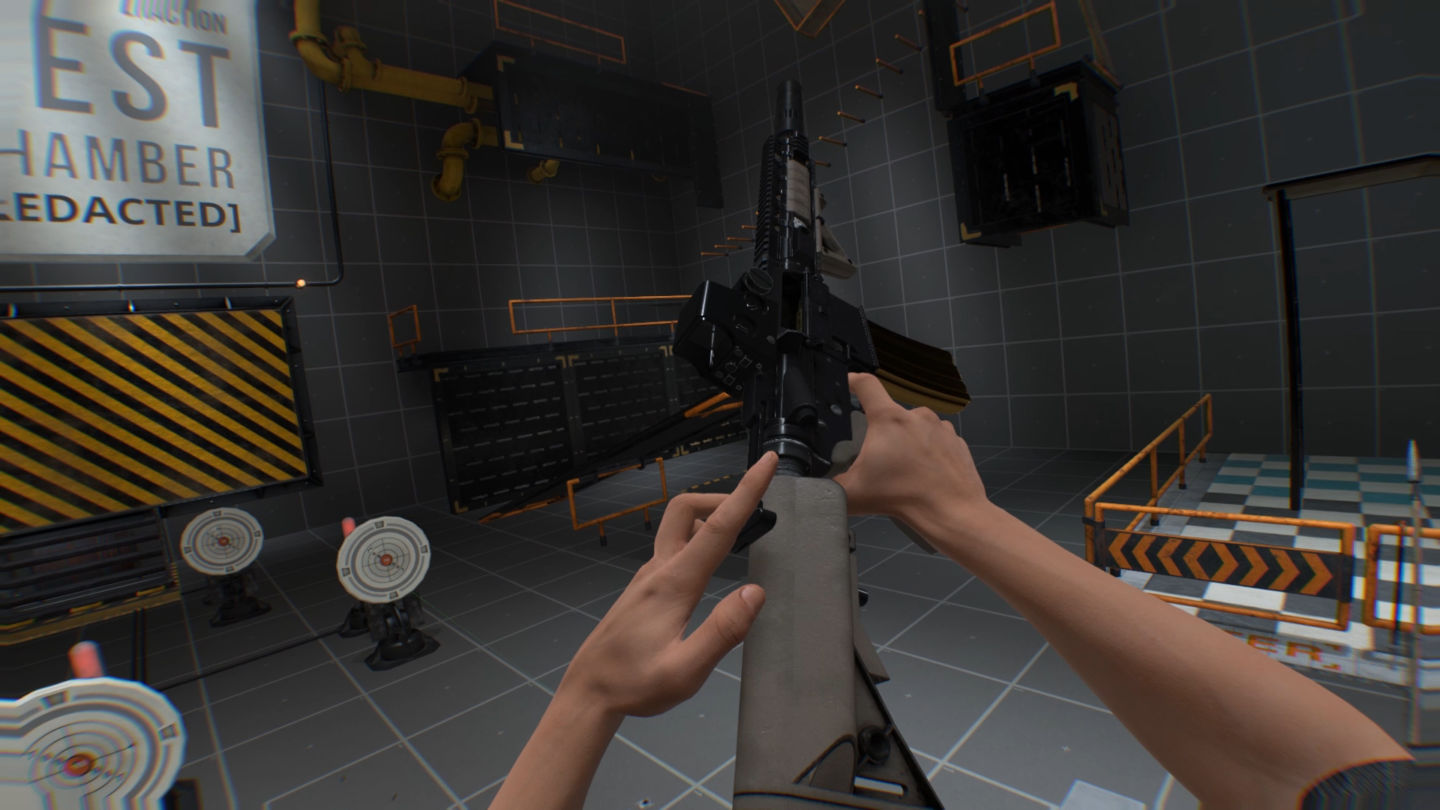UploadVR:





Polygon:
Tested:
Road to VR:
Ars Technica:






Valve wouldn't say specifically what the Index field of view is, citing confusion caused by the many ways it could be measured. The company did say, however, that Index is "20 degrees more than Vive for the average customer." Depending how you measure, the original Vive is between 100 and 110 degrees for its field of view — but the actual FoV delivered by that headset could change based on individual fitting.
A knob on the top-right side of the Index headset adjusts the distance of the lenses closer to the eyes. A single centimeter of change from this dial, according to Valve Corporation representatives, can expand or restrict the field of view into a virtual world by 30 degrees. "The lenses move independently of the facial interface (foam/gasket area) which means the lenses can get much closer to the eye," a Valve representative explained.

For HTC Vive or Vive Pro owners, the Index upgrade starts at $499 from their current system to just get the new headset. The jump in visual and audio fidelity is huge.

There are no more fresnel rings on the lenses to catch distracting light, there's a proper fit to maximize field of view and visual comfort, and a wide sweet spot delivered by the optics encourages eye movement to look around a virtual world rather than feeling forced to resort to head movement just to see something clearly. The overall effect of these improvements on comfort is tremendous.



Index controllers (previously known as Knuckles controllers when they were just developer kits) are the first broadly available consumer VR controllers to be worn instead of just held.
Push in a tab at the top of the strap to adjust for various hand sizes. Pull a cord at the bottom to tighten the fit and repeat for the other hand.
Whether it was the active slashing of Beat Saber or playing Far Cry New Dawn in 2D on a theater-sized screen, the clarity of the visuals and my subtle sense of added comfort in those worlds started to convince me that Valve representatives were telling the truth when they said they put "fidelity" above all other considerations in the design of Index.
The range of implementations is typical of Valve's approach to the VR market on PCs developed through internal and external experimentation with partners. What we haven't seen, yet, is what Valve's own teams have done with this same hardware. There are no software bundles with Index at launch and Valve only confirmed a "flagship" VR game from Valve due in 2019 for all VR headsets which connect to Steam. Valve representatives declined to say anything more about it. "This is going to ruin you," a Valve representative told me before I strapped on the Index controllers one last time and played Beat Saber at 144 Hz.
After spending all weekend with the same game on other VR headsets, I have to say that he was mostly right. I just wanted more time with Index.
Polygon:
My first demo at Valve teaches me about how Knuckles simulates individual finger inputs. It's a Portal-like series of tests in which I variously shake hands with a robot, high-five, make the peace sign, point, waggle my digits, and shake my pinkie.
It takes me a few moments to figure out the inputs, but it's soon apparent that I'm able to make use of my VR hands pretty much the same way as I use my real hands. There's a slight lag in movement and input, but this is a way more intuitive system than I've ever played in VR before.
Index's Knuckles controllers make use of 87 sensors, each, so that the complexities of hand movement are translated into the virtual world. It's an impressive piece of user interface design that feels akin to magic.
Inside a Portal-themed demo, I'm impressed by Index's visual fidelity. The world looks sharper than I'm accustomed to seeing in older VR units. In particular, text is crisp and clear, certainly when in the center of my vision, though it blurs at the periphery. Index's screen resolution is 1440x1600 per eye, up from Vive's 1080×1200 per eye. But I'm told by Index's designers that this is only part of the picture.
Their task is to marry the display with optics and tracking. If one gets too far ahead of the others, its advantages are moot. For example, great optics will still be blurred by poor visual persistence: Sharp visuals must be designed to account for quick head movement. Fidelity is not a matter of raw power, but of careful balance.
According to Valve, the new headset offers a "typical user experience" field of view that's 20 degrees larger than Vive. This is aided by a custom dual-element system in which the user can move the lenses themselves.
For me, this means moving the lens right up to my spectacles. The effect is that I feel way more comfortable playing with my glasses on than I've ever felt with previous VR units. It's a much more intuitive, rewarding design than the Vive's setup of sliding the entire headset forward and backward. Plus, there's no outside-the-headset light leakage to impede my virtual world.
Index's standard frame rate is 120 Hz, up from the Vive's 90 Hz. Index also offers an experimental 144 Hz mode, which I tried while playing a demo of No Man's Sky. I'd played this on Vive a few weeks before, during an invigorating demo at GDC. Although it's difficult to make comparisons based entirely on memory, I feel that Index offered a significantly sharper experience. Even after throwing a spaceship around for 15 minutes, I felt none of the queasiness that I've come to expect from even the slickest VR games. And I saw far less blur than I've seen before.
During Valve's demonstration, a spokesperson said that Index is the sort of thing that is likely to appeal to a virtual reality enthusiast who (a) must have the latest thing and (b) enjoys sufficient disposable income to satisfy that desire. It's an interesting contrast with Facebook's strategy for Rift, which is pushing hard for the price tipping point when VR suddenly becomes a mass-market thing, like smartphones did a decade ago.
Index is designed, in all its particulars, to be backward-compatible with Vive. If you want to use "classic" controls with Knuckles, you can. If you want to play first-generation VR games with Index, that's fine.
Index also allows for hardware modifications. A front-mounted space on the headset's brow, just behind the visor, would allow designers to come up with who-knows-what kind of peripherals, which plays into Valve's ideals of an open-sourced world. It will be fascinating to see how this plays out as developers get their hands on the unit. Valve is calling this slot the "frunk."
Tested:
Road to VR:
At the event, Valve's VR team explained that the fidelity of the VR experience is not defined by a single spec, but rather many little details that all need to be done well to achieve a high fidelity experience. As such, Valve aimed to design a headset which gets the details right. Though Valve didn't manufacture the Vive, they did contribute significant R&D to the headset and regularly referenced it as a point of comparison for Index (so we'll do the same). So what has Valve done to try to get all the details right to raise the bar on VR fidelity?
First is the displays, which (surprisingly to me) are now LCD (instead of OLED), and have a resolution of 1,440 × 1,600 per display. That's a decent jump in resolution over the Vive (at 1,080 × 1,200). And while it's the same on-paper resolution as the Vive Pro, the move from OLED to LCD means many more sub-pixels which further boost apparent resolution. Valve says that there's 50% more sub-pixels in the LCD display than in an equivalent OLED display.
But resolution isn't the only critical factor, Valve contends. The display is also the first in any headset, the company says, to offer sub-pixel persistence. Persistence is how long a pixel remains lit, and in a VR, lower is better because illuminating pixels for less time reduces blur during head movement. But this is challenging because when you reduce the illumination time, you also reduce brightness, which means that you need a display that can get very bright, very fast. While the original Vive has an illumination time of 1.85ms, which can result in persistence blurring of 2-3 pixels, Index's pixels illuminate in just 0.33ms which achieves sub-pixel (effectively invisible) persistence blurring, Valve says. On top of that, Index's displays can run at refresh rates of 90Hz, 120Hz, and 144Hz (though the last is 'experimental').
And finally, audio, for which Valve developed a very interesting solution that is likely to be copied by many headsets to come. They call it 'nearfield off-ear speakers', which is a fancy way of saying 'the speakers hang down next to your ears but do not rest on them'. This seems unimportant, but it allows Index to bring the same benefits of the 'audio pipe' approach that we've seen in other recent headsets (they don't get in the way of putting on the headset) but with drastically better audio quality.
So, that's what Valve says. What's it like to actually use the headset? I got to test Index across several different demos and came out very impressed with what I saw.
The upgrades to the display—both in low persistence and refresh rate—really make the VR world look more 'solid' than ever before. 144Hz looks buttery smooth and feels closer to what you'd expect the real world to look like by pushing latency even lower than typical 90Hz headsets. These two elements are arguably a bigger improvement to the visuals than the upgraded resolution which, indeed, brings a sharper image, but is still far from eliminating the screen door effect.
Field of view is definitely higher than the Vive—thanks to the eye-relief adjustment easily allowing me to dial in the maximum field of view—but the difference didn't exactly blow me away despite being nice to have. I was able to pull the eye-relief adjustment in as far as it would go while still being perfectly comfortable (some folks might pull back a bit to stop their eyelashes from touching). At that range, I could slightly make out the edges of the display in my peripheral view on the sides and bottom, though I could have easily pulled the eye-relief back just a touch to make that more apparent.
One surprising omission from Index is eye-tracking. For all the work that Valve has put into getting the details right, eye-tracking could have synergized very well—everything from telling the user their exact IPD and how to set it, to whether their headset is adjusted for optimal clarity, to foveated rendering to make it easier to achieve stable 144Hz gameplay, and plenty more. We haven't gotten an answer from Valve on why they opted not to include eye-tracking.
Beyond the headset, Valve is of course pairing Index with the Knuckles controllers and pulling everything together with their SteamVR Tracking solution. Even though it creates more friction for use compared to inside-out tracking, Valve believes the quality of their tracking solution is critical to the fidelity of the experience.
So then what about the cameras on the front of the headset? Valve said that they are "very good computer vision cameras," but they don't plan to use them officially for tracking; inside-out tracking "isn't quite there for us." They don't exactly have a firm use-case for them right now, but wanted to make sure they were on board for experimentation and, at a minimum, pass-through video. That said, they plan to release all the code behind the cameras so that developers can play, and more than likely someone will try implementing an unofficial inside-out tracking solution for the headset.
Further on modability, Valve says they will release full CAD models of Index to make it easy for people to design different things for the headset, like the foam face padding which is magnetic and easily removed. Using the CAD models, someone could print a new design for the padding bracket to better fit their face.
So, Index looks and sounds pretty damn good, and seems like it will achieve Valve's goal of moving the bar forward on VR fidelity. Yes, there are higher resolution headsets out there, like HP's upcoming Reverb, but Index brings more than a spec sheet to the table—it offers high-end quality across the spectrum.
Ars Technica:

The Valve Index does not read your brain waves, does not track your heart rate, and does not track your eyeballs' motion. The Valve Index does not innovate with an "inside-out" tracking system. It does not include an array of secret cameras or sensors and does not bounce sound waves via hidden or embedded speakers. The Valve Index does not employ a shrunken, "infinite pixel" panel or come with a revolutionary new take on foveated rendering. The Valve Index does not include a built-in processing unit. It must be connected to a gaming-caliber PC with a long cord trailing from the back of your head.
So what is Valve's big aspiration for the future of VR as far as the Index is concerned? The answer is long-term comfort. In Valve's eyes, that goal doesn't (yet) include features that we have been dreaming of, such as reducing the clutter of an average PC-VR experience, dropping the price, optimizing performance with eye-tracking systems, or liberating users with true, cordless freedom. Valve wants to convince us that Index is as good as VR users are going to get at a $999 price point in 2019—and that it delivers $999 worth of VR quality in 2019.
Most consumer-grade VR headsets use a single display panel, which is then translated by a pair of large, curved lenses. The Valve Index twists this convention by using a pair of LCD panels, each sporting a 1440x1600 resolution. That doesn't make them a combined 2880x1600 panel. Instead, the panels are physically separated, then individually angled at a roughly 5 degree angle.
The result is a wider peripheral distribution by default, but the system also allows Valve to implement a new type of slider. Valve insists that no matter what face shape or pair of glasses you bring into the Index, you can turn an "eye relief" knob to bring the Index's lenses as close to your face as comfortably possible, and the device does so in a way that guarantees a greater effective FOV. After describing most FOV sales pitches as "dishonest" due to many users' faces or glasses obstructing that full FOV potential, Valve insists that its eye relief knob will guarantee a "20 degree" increase in FOV for all users compared to traditional "110-degree" systems.

What sold me on the FOV boost wasn't any particular game demo, however. The demos I experienced were focused on front-and-center content—likely because the games in question need to be compatible with other 110-degree headsets. No, it was a VR movie theater moment, where I virtually sat down and watched 1080p movie trailers streamed directly from YouTube. That's not a great resolution to beam into a high-res VR headset, made worse by YouTube's compression. Yet I was taken aback by this video's full widescreen ratio, as opposed to being letterboxed into a tighter 16:9 square.
I could see most of the virtual cinema screen, as if I was seated in a comfortable real-life theater. I needed to glance a bit left or right for the most peripheral content, but otherwise, I could comfortably take in a giant image at all times. That is not how most VR headsets work. This moment stayed with me and helped me realize how awesome Index's FOV boost was when I went home and tried the same demo on my Vive Pro, which forced me to constantly sweep my glances in either direction to take in a full cinema-ratio image.
Valve insists that its low-persistence LCD panels have all but solved the issue of perceptible motion blur within VR, but I struggle to agree with that. My rapid movement within the event's demos always included some slight blurring—perhaps due to the fact that LCD technology, even at its most refined, doesn't enjoy the total pixel blackout of a pure OLED panel. This wasn't helped by some of the demos struggling to maintain a 120Hz refresh rate.
Thus, in the quick-burst demos I played (which I'll get to), I struggled to perceive a difference in effective pixel resolution or pixel quality as immediately as I noticed the FOV boost. I bet I'd have noticed perceptible pixel-depth differences if Valve had set up some HTC Vive or Oculus Rift headsets at the event, but that wasn't the case. And Valve's assurances about long-term comfort didn't do much for my 10- and 15-minute demos.
There's also the matter of the Valve Index Controllers, which we've seen many times over as the "Knuckles" prototype. Now ready for retail, they fulfill the company's longtime dream of a controller that fits over your hand like a half-glove, which you can either grip and use as a physical controller or let go of and use as a finger-position sensor.

Valve went through a lengthy internal process to get these controllers up to snuff, and we were shown a few of the less-becoming test versions at the Index event. These were followed by four more public pre-release reveals (EV1, EV2, EV3, and DV1), leading to this week's unveil of a "final" model. So I can finally admit that I totally got to play with a pair of unfinished, pre-release Knuckles (an earlier model than the Vive Index Controllers) for an extended period of time before this week's event.
Honestly, the Index Controllers are essentially a spiffier take on the Oculus Touch controllers. Each has nearly identical functions: a trigger, a "grip," a joystick, two face buttons, and some form of finger tracking. But instead of holding onto a handle at all times, the Index Controller asks you to put your hand through a fabric, spandex-lined loop, then cinch it around your knuckles. The above gallery shows how this works, and it really is easy to open your hands, wiggle your fingers, and return them immediately to the controller where you expect your fingers to go.
The first functional difference for the Index Controller is that its grip is force-sensitive, as opposed to the squishier analog trigger on Oculus Touch. Lightly press the grip strip to softly hold or touch a virtual object, or grip more firmly to feel a haptic buzz as confirmation that you're "holding" something in VR. This was most cleverly demonstrated by the upcoming physics-action game Boneworks, in which you can grab a long thin object like a rake, then use the light-grip touch to slide a hand up and down that rake's length before firmly grabbing a spot in order to then swing the virtual object around. It's also a more comfortable way to confirm that you're holding an object like a gun by simply resting your fingers softly on this grip panel while otherwise squeezing a default trigger to shoot bullets.
But I found that it was easy to naturally rest fingers on the Index grip panel without meaning to virtually pick something up. I found myself accidentally activating in-game objects by doing this, and I didn't always want to let go of my controller. That fabric cinching is a constant reminder that something is on my hand, which is still more comfortable than holding onto a handle but not enough to trick me that my hands are liberated. Thus, wanting to hold onto the plastic or rest my fingers seems perfectly natural, and I'm not yet sure if the Index Controllers will account for that sensation.
This brings us to the software I tested on the Index. The first test was an unnamed 10-minute experience within the Portal 2 universe, in which various "personality cores" popped up and demanded that I make various gestures with my hands or interact with a pair of nearby robo-hands. Wave. Fist-bump. Shake hands. Hold up two fingers. High five. Down low... and yes, that was followed by "too slow."

Next up was Boneworks, from Stress Level Zero (maker of VR games Hover Junkers and Duck Season). This was the event's best Index Controller showcase, as it revolves around constantly picking up and using handheld weapons, from guns to hammers, not to mention a familiar-looking crowbar as a primary melee weapon. A mix of visual feedback and haptics make clear that you can't just grab objects in this game and expect them to work; rather, you have to slowly manipulate objects with both hands, accounting for their virtual heft and momentum before swinging them. If you try to pick up a hammer with only one hand, you have to pantomime lifting it verrrrry slowly or your VR hands will go invisible to indicate that you didn't do it right. Get a second hand in the mix and that pantomiming can be sped up. Reposition your hands for a better fulcrum and you can lift even more efficiently. (As I said above, a "soft touch" on the Index Controller's grip sensor lets you reposition hands on objects in convincing fashion.)

At its best, this demo let me pick stuff up in VR in ways I'd never done before, and SL0 inadvertently sold the Index Controllers' potential in a way they might not have realized. The developer showed me a preview build of Boneworks at this year's GDC, but at the last minute, the GDC demo was switched to Oculus Touch. (They didn't know I'd see them again one month later in different circumstances.) Thus, I could directly compare the two controller systems. Sure enough, this game's neat tactile systems felt all the more immersive with the full-hand grip sensation of the Index Controllers than they did with the abstraction of Oculus Touch.
But this game's promise was flummoxed by a few things, including general glitchiness for how objects move—which was perhaps an issue with my ineptitude in my first Index test of the game, with only 10 minutes to get a handle for its physics—along with imbalanced AI that swarmed and insta-killed me in my first (and only) battle before I was told my time was up. Worse than both of those things was an unoptimized frame rate within the game, which could be due to anything: the Valve Index's high rendering resolution, an unfinished build, or unoptimized Index drivers. It was a reminder that, at any rate, Index's various modes (90Hz, 120Hz, and 144Hz) do not support variable refresh rate, so if your PC can't get to a smooth 120Hz, you'll almost certainly want to stick with 90Hz when using Index to avoid higher-end frame rate judder.
I also got a surprise peek at the unfinished VR version of No Man's Sky. In gameplay terms, NMSVRis everything I wanted from the formerly beleaguered game as translated to VR, in that it lets you do every one of its flat-screen actions within its VR form. NMS is a pretty inventory-heavy game, and thankfully, you can flip either hand to reveal one of the game's menus and easily pick through consumables, crafting recipes, tools, weapons, and more. Getting into and out of spaceships and dune buggies is as simple as pointing at them for long enough to insta-warp into them. And driving those vehicles felt freakin' awesome (hyperspace in VR? yes please!).

As a Valve Index demo, on the other hand, NMSVR was a strange choice. The game's internal pixel resolution was constantly shrinking in order to maintain a 90Hz refresh, so it always looked blurry, while the Index Controllers were rendered moot because Hello Games hadn't updated its controls beyond the simple buttons of the HTC Vive's wands. It made zero use of individual fingers, pinching, or gripping.
None of the demos (which also included the recently launched Vacation Simulator) did a good job showcasing the 3D-positional sound system that Valve advertised. The Index headset floats two speakers over users' ears, as opposed to clamping down like headphones, and the resulting audio is supposed to sound as if users have been transported to another world. But the demo event was so full of ambient noise that I had to set SteamVR's volume level to 95% just to hear the demos' dialogue. I couldn't perceive an iota of nuanced or positional audio on top of that.
I wonder whether Valve should have held the Index back, especially with all eyes on the company expecting something huge. After all, company co-founder Gabe Newell has talked at length about the importance of building new hardware in-house to emphasize development dreams. He's cited Shigeru Miyamoto's ability to do similar things within Nintendo to push for innovations like the N64's analog stick and the DS's touchscreen. But Index didn't premiere alongside a Miyamoto-caliber demo. My industry sources keep telling me that interesting software is bubbling in Valve's VR department, but it's hard to have faith in a company that has gone so long without shipping a compelling product. (I tried having that faith with last year's game Artifact. My $50 of card purchases hasn't paid off.)
It wasn't until later at the event that someone from Valve mentioned a "more than 30 minutes" design focus, which was far more intriguing. I have used my fair share of VR, and I'm quite familiar with the wobbly "more than an hour in VR" feeling. Could the Valve Index truly remedy that sensation—and is that better than relieving my frustration with sensing boxes and feet-tripping cords? I'm constantly looking for the next "magical" thing in VR, and thus far, my most recent thrills have come from wireless Oculus Quest tests at expos [update: also, I've been testing Oculus Quest at my own home for the past two weeks]. Will the Index's mix of unwieldy tracking boxes, corded headset, and knuckle-bound controllers get me to a comfortable multi-hour threshold and convince me of a different kind of "VR magic"?
Last edited:




